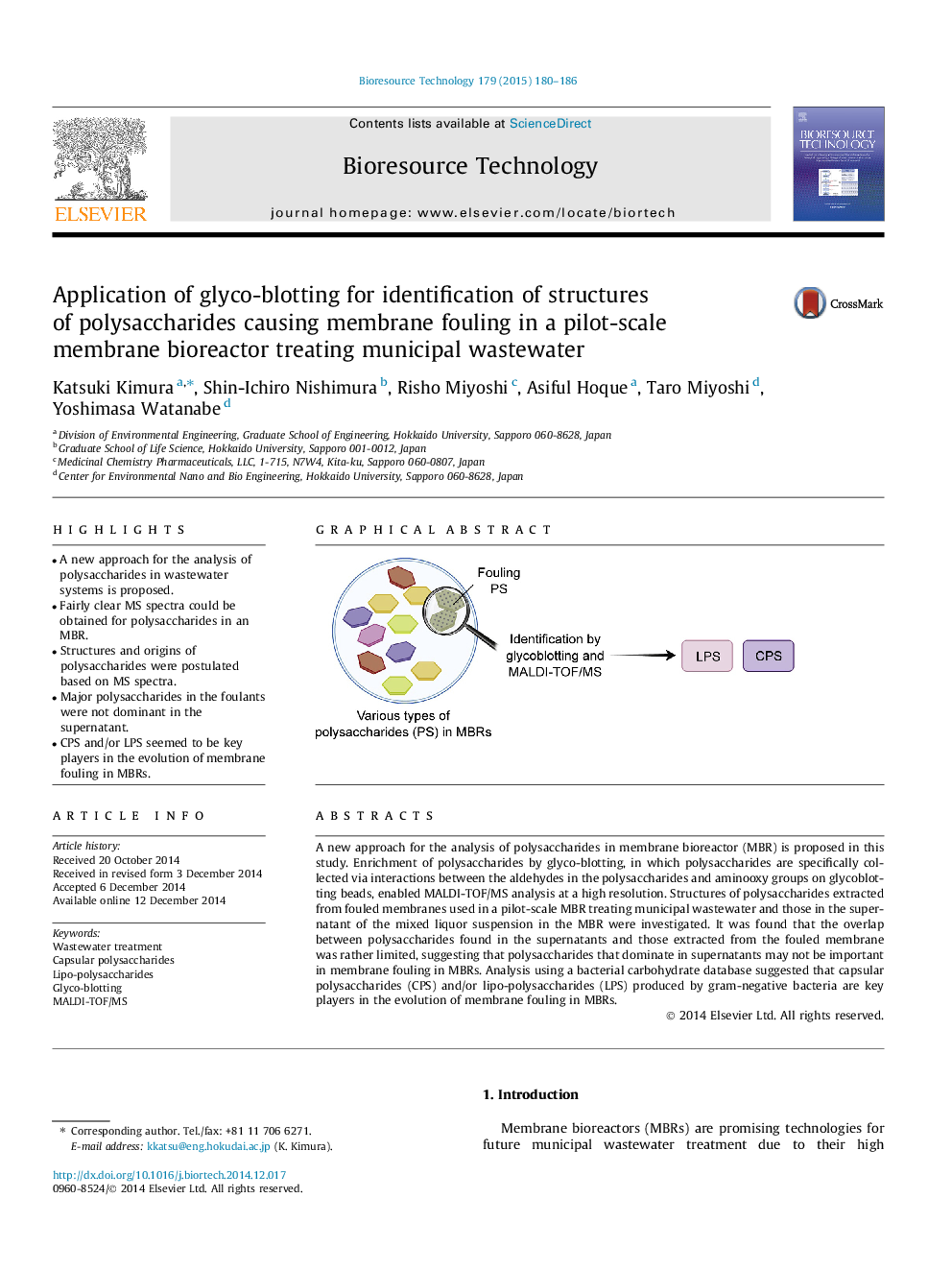| Article ID | Journal | Published Year | Pages | File Type |
|---|---|---|---|---|
| 680120 | Bioresource Technology | 2015 | 7 Pages |
•A new approach for the analysis of polysaccharides in wastewater systems is proposed.•Fairly clear MS spectra could be obtained for polysaccharides in an MBR.•Structures and origins of polysaccharides were postulated based on MS spectra.•Major polysaccharides in the foulants were not dominant in the supernatant.•CPS and/or LPS seemed to be key players in the evolution of membrane fouling in MBRs.
sA new approach for the analysis of polysaccharides in membrane bioreactor (MBR) is proposed in this study. Enrichment of polysaccharides by glyco-blotting, in which polysaccharides are specifically collected via interactions between the aldehydes in the polysaccharides and aminooxy groups on glycoblotting beads, enabled MALDI-TOF/MS analysis at a high resolution. Structures of polysaccharides extracted from fouled membranes used in a pilot-scale MBR treating municipal wastewater and those in the supernatant of the mixed liquor suspension in the MBR were investigated. It was found that the overlap between polysaccharides found in the supernatants and those extracted from the fouled membrane was rather limited, suggesting that polysaccharides that dominate in supernatants may not be important in membrane fouling in MBRs. Analysis using a bacterial carbohydrate database suggested that capsular polysaccharides (CPS) and/or lipo-polysaccharides (LPS) produced by gram-negative bacteria are key players in the evolution of membrane fouling in MBRs.
Graphical abstractFigure optionsDownload full-size imageDownload as PowerPoint slide
